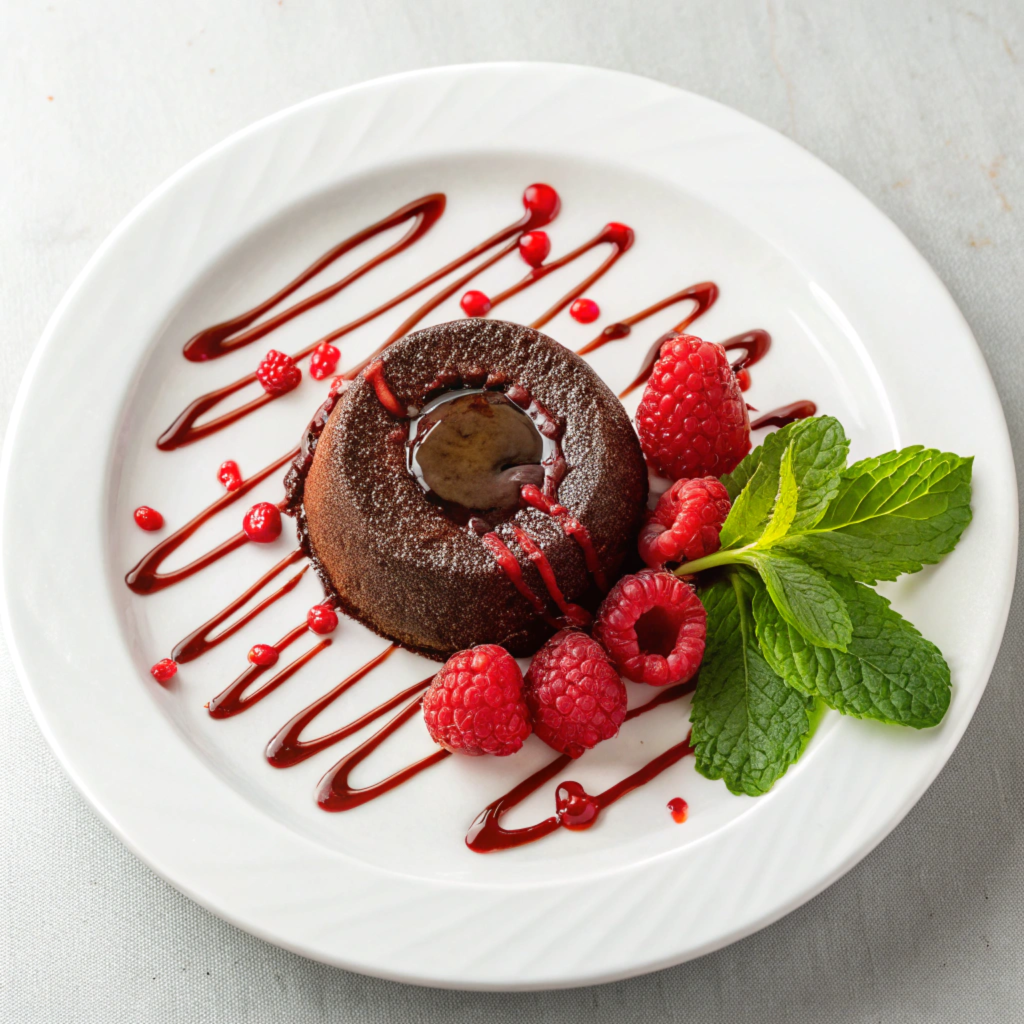Few desserts elicit as much awe and excitement as the molten chocolate cake. With its gooey, lava-like chocolate center and its perfectly soft cake exterior, this dessert is a treat for the senses. Whether served in a fine dining restaurant or whipped up at home, molten chocolate has become a universal symbol of indulgence. But what makes this dessert so beloved? In this article, we’ll explore its history, science, recipes, and more to celebrate the decadence of molten chocolate.
1. What Is Molten Chocolate?
Molten chocolate refers to any dessert with a flowing chocolate interior surrounded by a baked shell. Often referred to as “lava cake,” it combines the best of two worlds: the richness of a brownie and the softness of a soufflé. Its appeal lies in the contrast between its firm exterior and warm, oozing core, creating a sensory experience that’s hard to beat.
2. History of Molten Chocolate
The origins of molten chocolate cake are as rich as its flavor. The story often credits French chef Michel Bras, who invented a dessert called coulant au chocolat in 1981. His version used a frozen ganache core to create the molten effect upon baking. Later, American chef Jean-Georges Vongerichten popularized a simpler version by underbaking a chocolate sponge cake. Today, molten chocolate desserts are a global favorite, found in countless variations.
The Science Behind Molten Chocolate
3. The Science Behind Molten Chocolate
Molten chocolate desserts are more than just a culinary delight they’re a testament to the fascinating science of food. Their appeal is rooted in chemistry, where the interaction of heat, ingredients, and precise timing creates the perfect gooey center.
3.1 Why Does Chocolate Melt?
Chocolate’s melting magic is due to the cocoa butter in its composition. Cocoa butter has a low melting point, typically between 86°F and 90°F (30°C to 32°C), which is why chocolate melts effortlessly on your tongue. In a molten chocolate cake, this melting property creates a luxurious, flowing center when the exterior sets just enough to hold its shape.
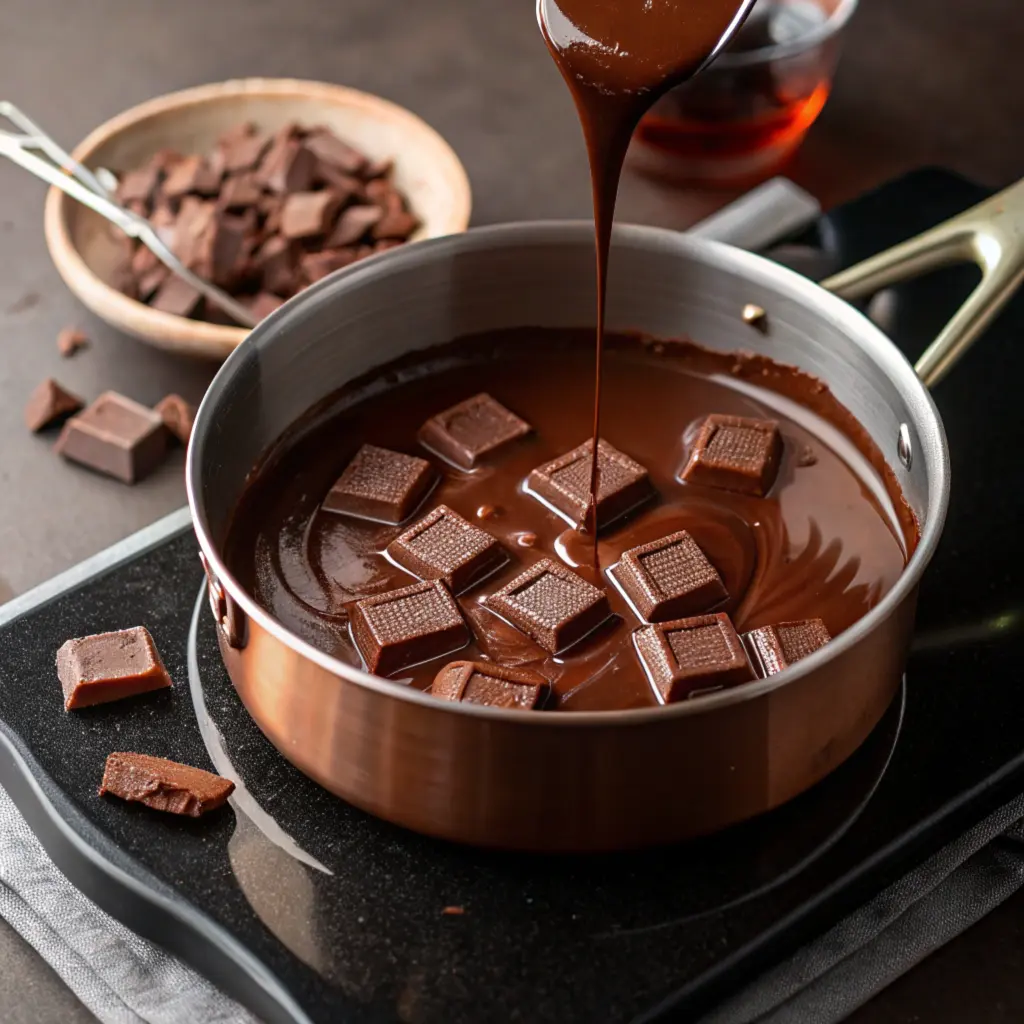
When you bake molten chocolate cake, the outer layer solidifies faster due to the higher heat exposure, while the center remains liquid because it’s insulated by the batter. This creates the signature lava-like effect when the cake is sliced.
3.2 The Role of Ingredients in Texture
The main ingredients chocolate, butter, eggs, sugar, and sometimes flour each play a crucial role in achieving the ideal texture. Here’s how they work together:
- Chocolate: Provides the intense flavor and gooey consistency.
- Butter: Adds richness and helps emulsify the batter for a smooth texture.
- Eggs: Act as a leavening agent, trapping air for a soft, airy exterior.
- Sugar: Balances the chocolate’s bitterness and contributes to caramelization during baking.
- Flour: If used sparingly, it gives structure to the cake without over-drying it.
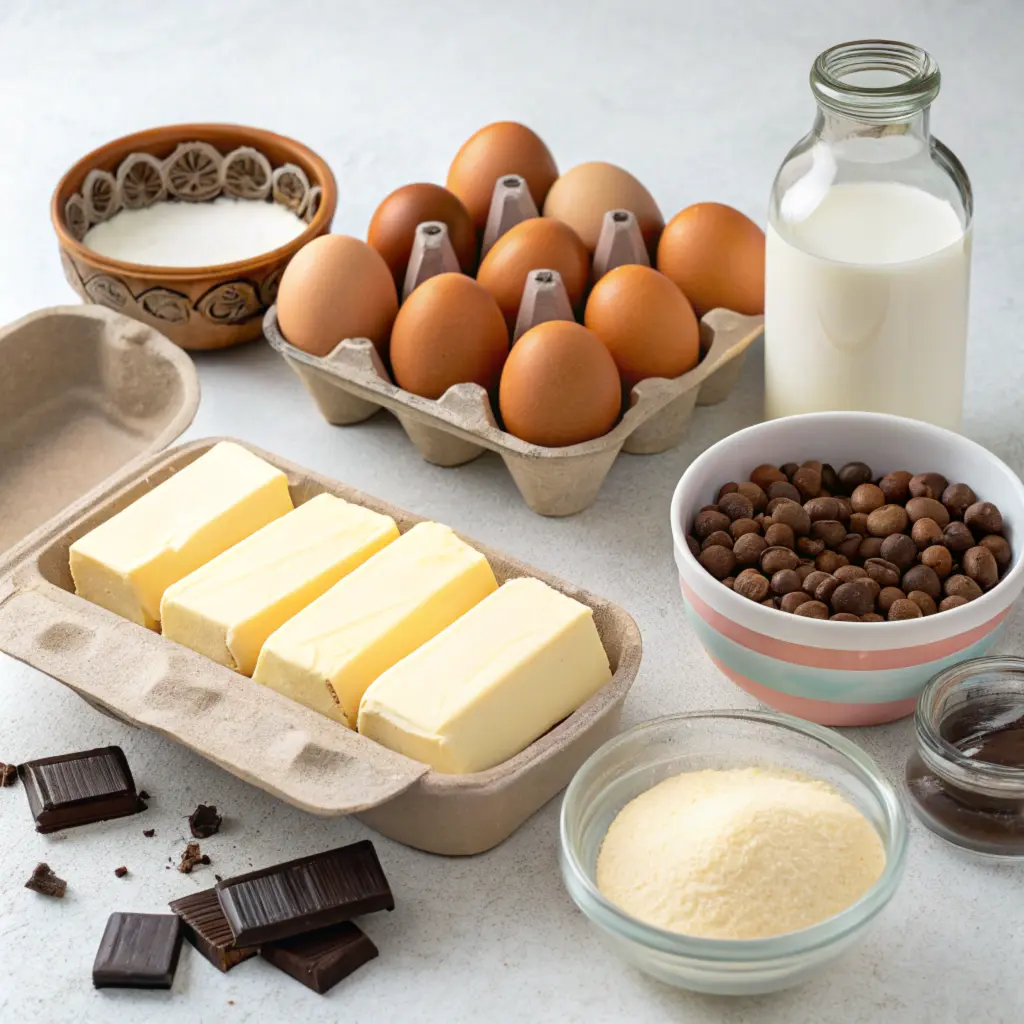
Temperature and timing are also critical. Overbaking eliminates the molten center, while underbaking results in a runny cake that won’t hold its shape. A precise baking time of 10–12 minutes at 425°F (218°C) is often recommended for small ramekins.
4. How to Make Molten Chocolate Cake at Home
Molten chocolate cake may seem like a professional chef’s masterpiece, but it’s surprisingly simple to make at home. With just a few ingredients and some attention to detail, you can enjoy this luxurious dessert anytime.
4.1 Essential Ingredients
To create the perfect molten chocolate cake, you’ll need the following:
- 200g (7 oz) dark chocolate (70% cocoa)
- 100g (½ cup) unsalted butter
- 2 large eggs
- 2 egg yolks
- 50g (¼ cup) granulated sugar
- 30g (¼ cup) all-purpose flour
- A pinch of salt and optional vanilla extract for added flavor.
4.2 Step-by-Step Process
- Prepare Your Equipment: Preheat the oven to 425°F (218°C). Grease your ramekins or muffin tins with butter and dust with cocoa powder to prevent sticking.
- Melt the Chocolate and Butter: In a heatproof bowl, melt the chocolate and butter together using a microwave or double boiler. Stir until smooth and set aside to cool slightly.
- Whisk the Eggs and Sugar: In another bowl, whisk the eggs, yolks, and sugar until pale and frothy. This step helps incorporate air for a light texture.
- Combine the Mixtures: Gradually fold the chocolate mixture into the egg mixture, followed by the flour, salt, and any optional flavorings. Mix until just combined to avoid overworking the batter.
- Pour into Molds: Divide the batter evenly among the prepared ramekins. Leave some space at the top, as the cakes will rise slightly during baking.
- Bake: Place the ramekins on a baking tray and bake for 10–12 minutes. The edges should be set, but the center should still jiggle slightly when shaken.
- Serve Immediately: Let the cakes cool for 1 minute, then invert them onto serving plates. Top with a scoop of ice cream, whipped cream, or fresh berries.
The science and method behind molten chocolate are as intricate as they are rewarding. With just a little practice, you can master the art of creating this indulgent dessert in your own kitchen.
Variations of Molten Chocolate Desserts
5. Variations of Molten Chocolate Desserts
Molten chocolate is incredibly versatile, inspiring countless variations to suit dietary preferences, flavor profiles, and creative presentations. From vegan options to gluten-free adaptations, this dessert’s flexibility ensures everyone can enjoy its indulgent charm.
5.1 Vegan Molten Chocolate
Creating a vegan version of molten chocolate cake is simpler than you might think. The key is finding suitable substitutes for the eggs, butter, and dairy-based chocolate. Here’s how to make it vegan-friendly:
- Replace Butter: Use plant-based butter or coconut oil for richness.
- Replace Eggs: Use a combination of flaxseed meal and water (commonly called a “flax egg”) for binding. One tablespoon of flaxseed meal mixed with three tablespoons of water equals one egg.
- Choose Vegan Chocolate: Ensure the chocolate is free of milk solids. Dark chocolate is often naturally vegan but check the label to confirm.
Despite these substitutions, the result retains its gooey center and rich chocolate flavor. The plant-based alternatives also add unique nutty and creamy notes that elevate the dessert.
5.2 Gluten-Free Molten Chocolate
For those avoiding gluten, molten chocolate can be easily adapted. The small amount of flour in the traditional recipe is replaceable with gluten-free alternatives such as:
- Almond flour for a nutty flavor.
- Coconut flour for a tropical touch.
- A gluten-free flour blend for a neutral profile.
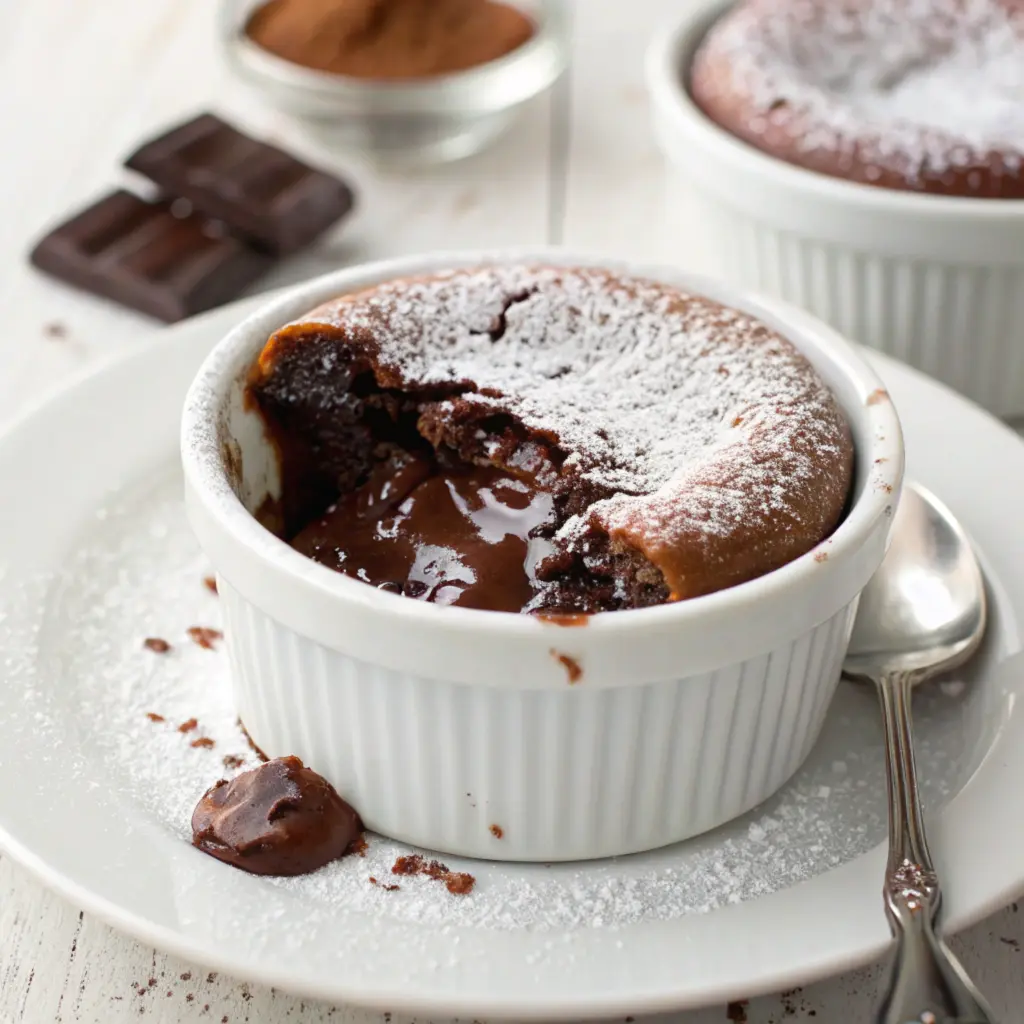
The trick to achieving the right texture lies in measuring accurately. Gluten-free flours can be more absorbent, so adjustments might be necessary to avoid a dry batter.
5.3 Flavor Innovations
Beyond dietary adaptations, chefs and home bakers alike have experimented with adding creative flavors to molten chocolate desserts:
- Salted Caramel Molten Cake: Add a layer of salted caramel in the center before baking.
- Spiced Chocolate Lava Cake: Incorporate cinnamon, chili powder, or cardamom for a spicy kick.
- Matcha Chocolate Lava Cake: Blend matcha powder with white chocolate for a visually stunning and unique flavor.
6. Serving and Pairing Suggestions
Molten chocolate cake is delicious on its own, but pairing it with complementary flavors and textures can elevate it to new heights.
6.1 Classic Pairings
- Vanilla Ice Cream: The cold creaminess contrasts beautifully with the warm, gooey chocolate.
- Fresh Berries: Raspberries, strawberries, or blackberries add a tartness that balances the cake’s richness.
- Whipped Cream: A dollop of lightly sweetened cream adds a cloud-like lightness.
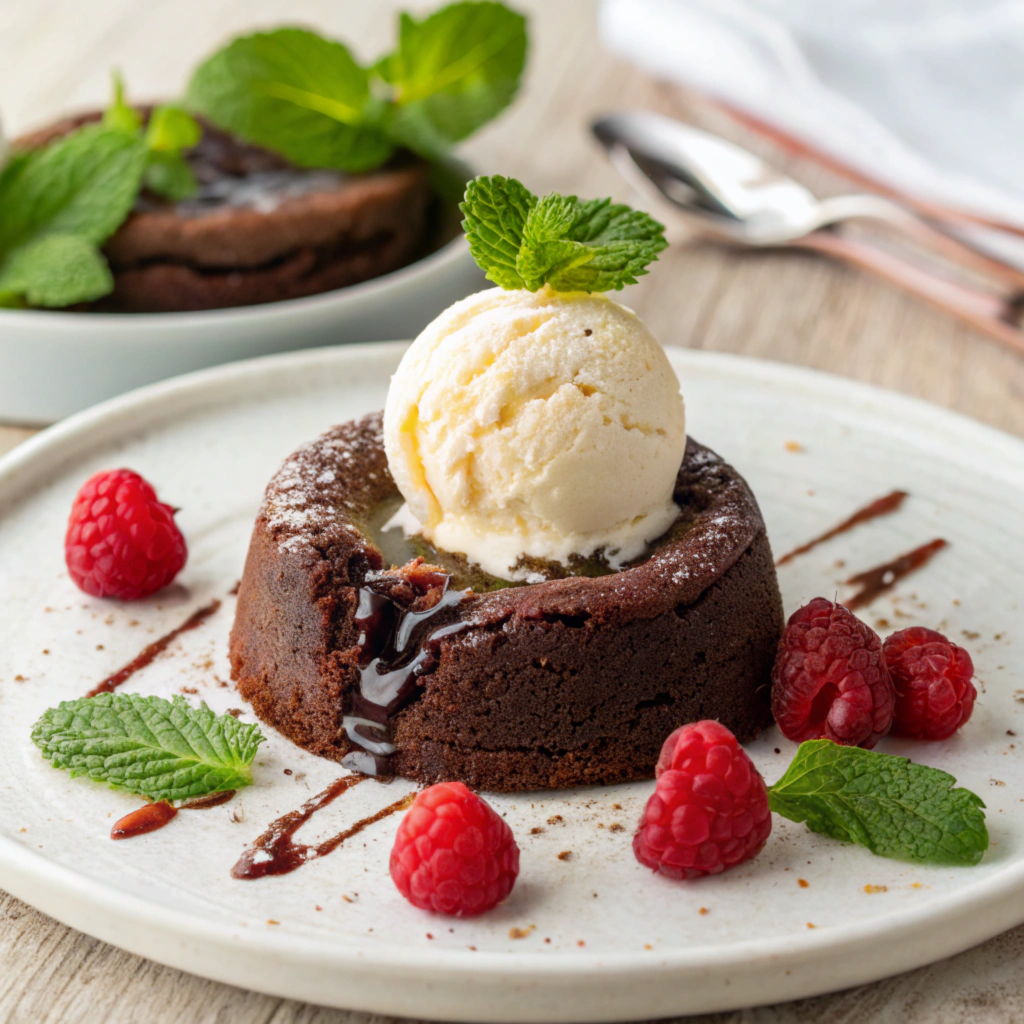
6.2 Beverage Pairings
Choosing the right drink can enhance the dessert experience. Consider these options:
- Coffee: A strong espresso or cappuccino complements the cake’s bold flavor.
- Wine: A glass of red wine, such as Merlot or Cabernet Sauvignon, highlights the chocolate’s complexity.
- Milk: For a comforting classic, serve with a glass of cold milk.
Explore More Decadent Treats
If lava cake awakened your sweet tooth, here are more indulgences you’ll want to try:

